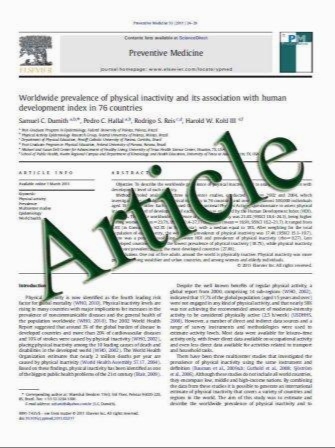Subjective emotional over-arousal to neutral social scenes in paranoid schizophrenia
- نوع فایل : کتاب
- زبان : انگلیسی
- مؤلف : Evelina Haralanova • Svetlozar Haralanov • Anna Beraldi • Hans-Ju¨rgen Mo¨ller • Kristina Hennig-Fast
- چاپ و سال / کشور: 2011
Description
From the clinical practice and some experimental studies, it is apparent that paranoid schizophrenia patients tend to assign emotional salience to neutral social stimuli. This aberrant cognitive bias has been conceptualized to result from increased emotional arousal, but direct empirical data are scarce. The aim of the present study was to quantify the subjective emotional arousal (SEA) evoked by emotionally non-salient (neutral) compared to emotionally salient (negative) social stimuli in schizophrenia patients and healthy controls. Thirty male inpatients with paranoid schizophrenia psychosis and 30 demographically matched healthy controls rated their level of SEA in response to neutral and negative social scenes from the International Affective Picture System and the Munich Affective Picture System. Schizophrenia patients compared to healthy controls had an increased overall SEA level. This relatively higher SEA was evoked only by the neutral but not by the negative social scenes. To our knowledge, the present study is the first designed to directly demonstrate subjective emotional over-arousal to neutral social scenes in paranoid schizophrenia. This finding might explain previous clinical and experimental data and could be viewed as the missing link between the primary neurobiological and secondary psychological mechanisms of paranoid psychotic-symptom formation. Furthermore, despite being very short and easy to perform, the task we used appeared to be sensitive enough to reveal emotional dysregulation, in terms of emotional disinhibition/hyperactivation in paranoid schizophrenia patients. Thus, it could have further research and clinical applications, including as a neurobehavioral probe for imaging studies.
Eur Arch Psychiatry Clin Neurosci DOI 10.1007/s00406-011-0227-1 Received: 15 February 2011 / Accepted: 12 July 2011


